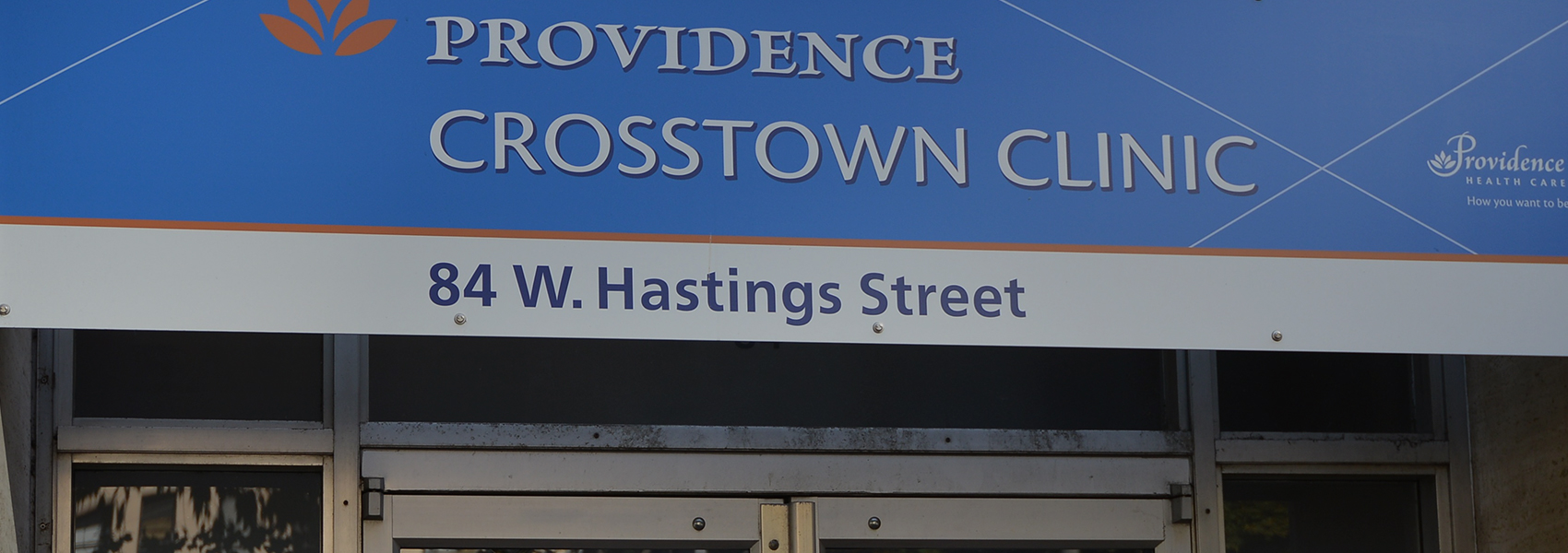August 31 is Overdose Awareness Day, an opportunity to raise awareness of overdose and reduce the stigma of drug-related deaths. International Overdose Awareness Day spreads the message that the tragedy of overdose death is preventable. Read more to learn about the follow-up study to NAOMI, SALOME, and RUTH.
The Program of Outcomes Research on Treatment with Injectables for Addiction (PORTIA) is the latest study in a long-term program of research that is developing evidence-based overdose prevention strategies and helping address the opioid crisis, led by CHÉOS Scientist Dr. Eugenia Oviedo-Joekes. The current study, with co-investigators that include Drs. Nick Bansback and Martin Schechter, is continuing research into the use of injectable opioid agonist treatment (iOAT) as treatment for opioid use disorder. PORTIA was recently awarded 3 years of funding through the CIHR Project Grant competition.
More options needed
The immediate expansion of effective treatments such as iOAT is widely considered to be necessary to curb the startling rate of opioid overdose-related deaths seen in B.C. and across Canada in recent years. Last year, the B.C. Ministry of Mental Health and Addictions called for the expansion of injectable drug treatments for people with chronic opioid use disorder who do not respond to oral medications. Although oral medications like methadone can reduce addiction severity and effectively retain some individuals in treatment, this is not the case for everyone. Overdose and other risks of opioid use are preventable if the right programs and policies are available to individuals who use street opioids. Many people discontinue treatment and continue to inject street opioids, which may contain potentially fatal fentanyl and carfentanil, in unsafe conditions and at increased risk of overdose, HIV, and hepatitis C. The PORTIA study aims to understand the factors that can inform the design of effective iOAT programs and maximize uptake into those programs.
Previous research
Earlier studies involving members of PORTIA’s research team, the North American Opiate Medication Initative (NAOMI), The Study to Assess Long-term Opioid Maintenance Effectiveness (SALOME) and its secondary analyses, and Research on the Use of Therapeutic Hydromorphone (RUTH), showed that injectable opioids like diacetylmorphine (DAM), the active ingredient in heroin, and hydromorphone (HDM), the licensed pain medication commonly known as Dilaudid, are effective at attracting and retaining individuals in treatment that have been unsuccessful with methadone. While diacetylmorphine has been trialed worldwide, the studies led by Dr. Oviedo-Joekes are unique as the only research that has investigated hydromorphone as part of iOAT. From an implementation perspective, hydromorphone is preferential to diacetylmorphine because, as a licenced treatment, it bypasses the regulatory and logistical challenges that come with prescribing pharmaceutical-grade heroin. Not only effective, a cost-effectiveness analysis of SALOME led by Dr. Bansback found that, for patients with severe opioid use disorder, iOAT could provide more benefit and be cost-saving because of reductions in criminal involvement and health care costs.
“We know that these treatments work, we know that they can save money,” said Dr. Oviedo-Joekes. “What we’re doing now with PORTIA is determining how to design and implement the best possible treatment program.”

PORTIA: Scaling up
The study will take place over a 24-month period and participants will receive treatment (either HDM or DAM) as part of regular programs, not a clinical trial. With feasibility and implementation in mind, PORTIA will not focus on iOAT provision directly but on the patients receiving treatment at a number of new and existing facilities. By considering both patient and provider factors, PORTIA will inform how injectable treatment can be scaled-up into effective and affordable services.
PORTIA will determine how certain factors (like other drug use, employment, and involvement in illegal activities) affect treatment adherence and retention in patients new to iOAT. An event calendar will be used to record the number of days of street opioid use as well as the sequence and timing those events. The study will also look at how participants’ values and preferences affect the success of the program.
“Understanding patient preferences is key to optimizing treatment adherence,” said Dr. Eugenia-Oviedo Joekes. “With PORTIA we will identify which aspects of iOAT delivery patients value most, where they’re willing to make trade-offs; this will be extremely useful in designing programs that are feasible but also desirable to people.”
Preferences will be quantified using a technique called best-worst scaling. This method involves participants choosing a best and worst options from a list of possible choices. The preference analysis portion of the study will be co-led by Dr. Nick Bansback.
The final objective of PORTIA is to understanding, from the perspective of nurses, their relationships with the study participants; this information will be gathered using qualitative interviews. This will be done in collaboration with Scott Harrison, an Adjunct Professor of Nursing at UBC and the Director of Urban Health at PHC, who bring years of expertise in nursing care in this field.
“Study nurses play the most prominent role in a patient’s experience in a program like this,” said Dr. Oviedo-Joekes. “Despite their integral role, there is very little in the academic literature about nursing in iOAT.”
Taken together, the data gathered over the course of PORTIA will be invaluable to policy makers as they move to implement iOAT programs. The primary goal of the study is to produce information that can lead to iOAT programs that are scalable, rapid, and affordable.
“The opioid overdose epidemic has made it clear that it is time to expand the continuum of care for opioid users,” said Dr. Oviedo-Joekes. “The outcomes of our study will offer a framework upon which this expansion can occur.”



